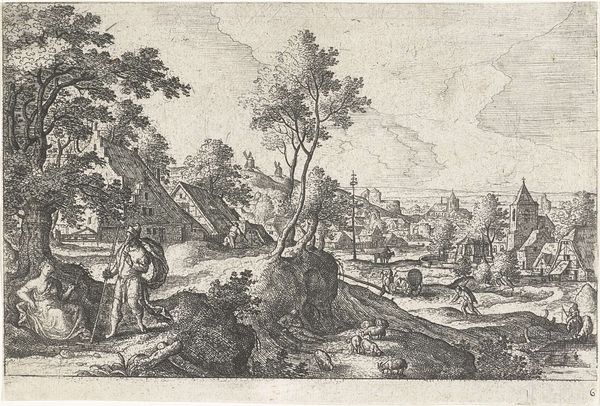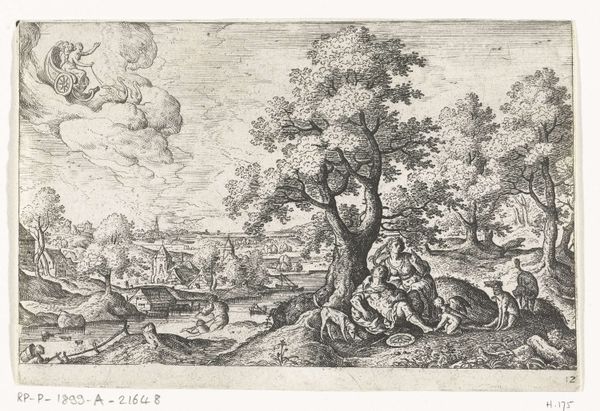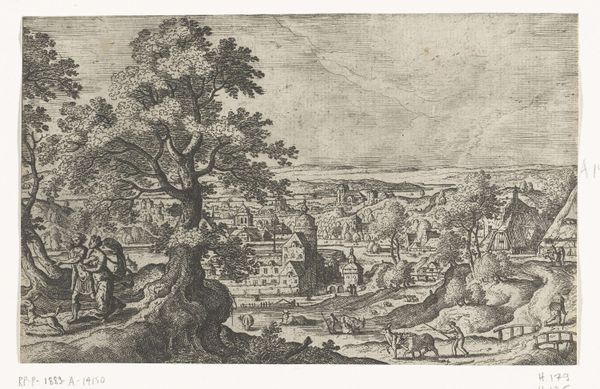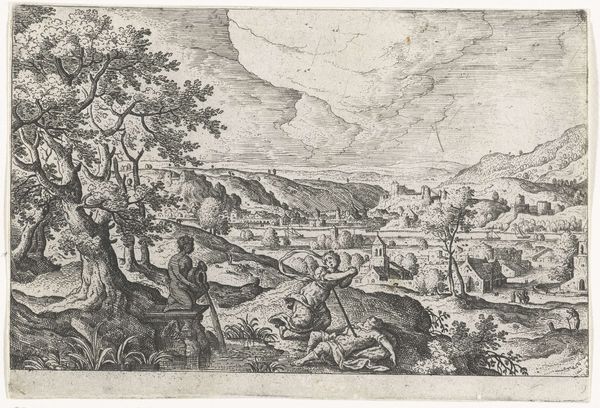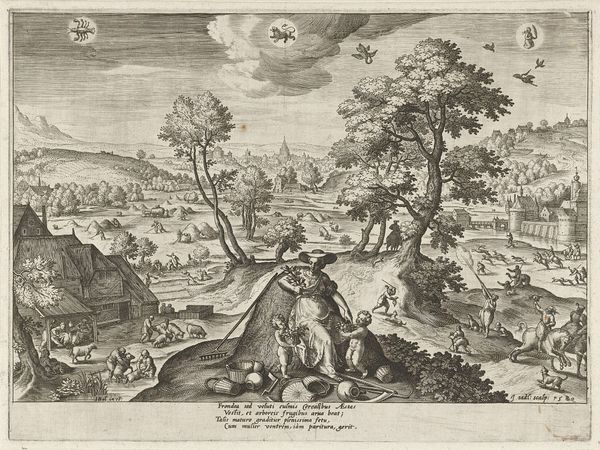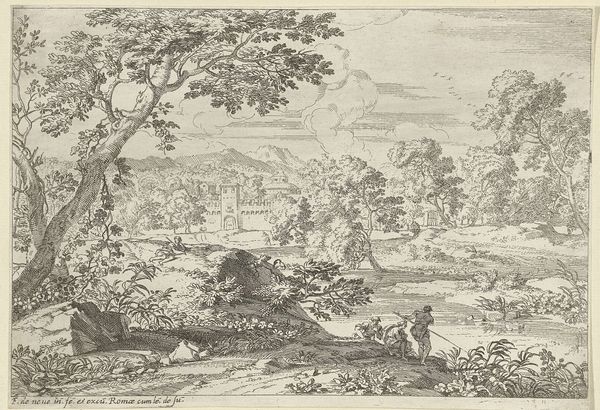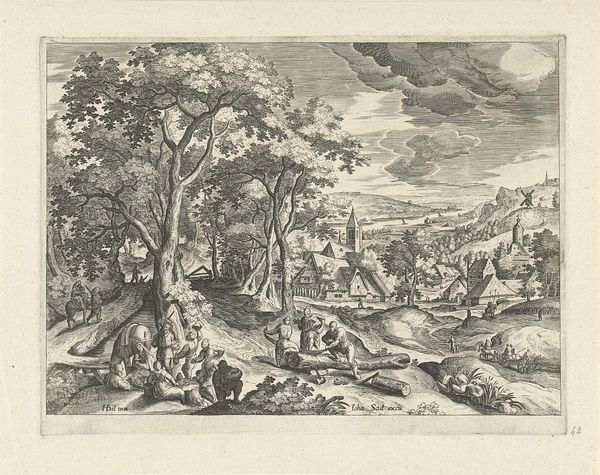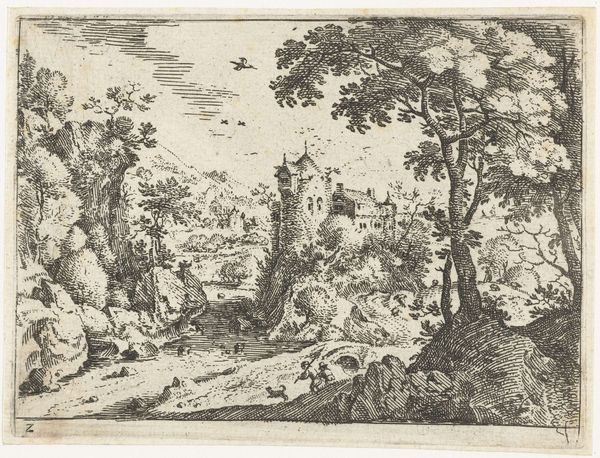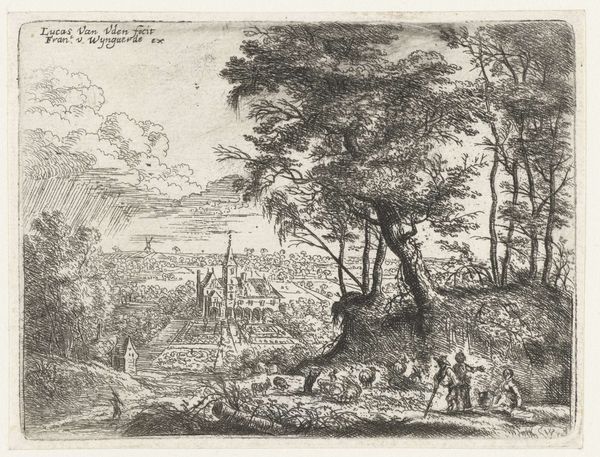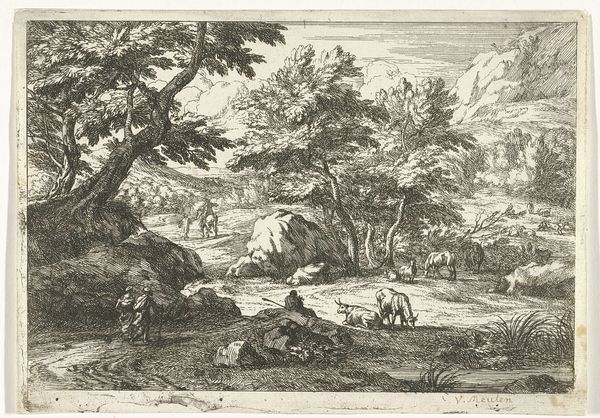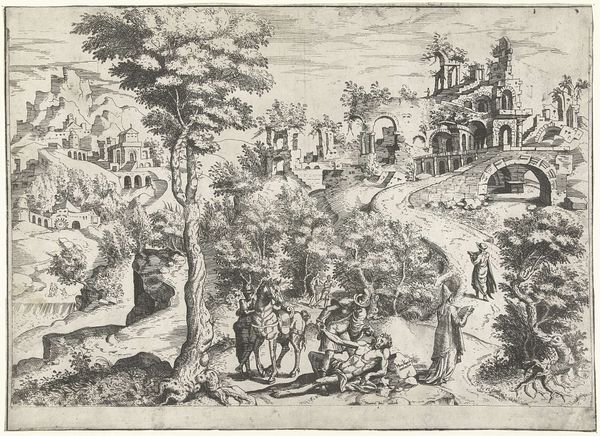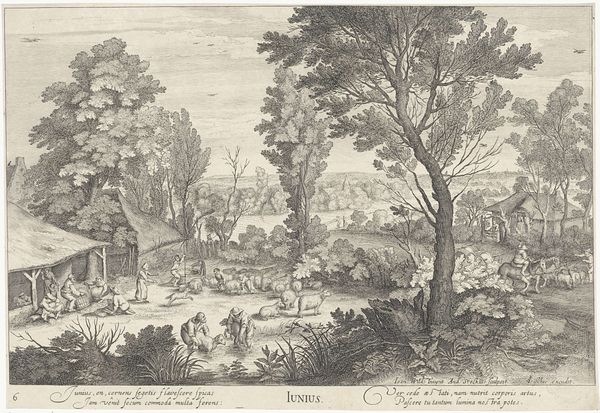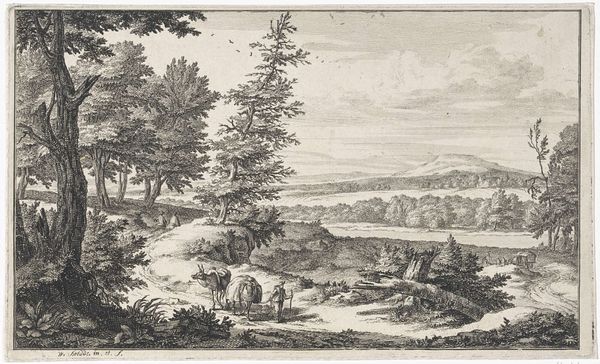
drawing, etching, ink, pen
#
drawing
#
ink drawing
#
baroque
#
pen drawing
#
etching
#
landscape
#
ink
#
pen work
#
pen
#
history-painting
Dimensions: height 125 mm, width 185 mm
Copyright: Rijks Museum: Open Domain
Curator: This is a work titled "Apollo doodt Coronis," likely created sometime between 1550 and 1650. It’s currently held here at the Rijksmuseum and attributed to an anonymous artist. The piece is created using pen, ink, and etching techniques on a drawing. Editor: Immediately, I'm struck by the overall feeling of distance and impending doom. The dark ink creates this sense of unease that pervades even the most pastoral aspects of the landscape. Curator: It's an interesting choice to blend landscape with what is ultimately a history painting, a narrative scene. This was often a means for artists to display their skills in rendering varied details—buildings, nature, figures—all at once. Editor: Absolutely, and consider the loaded symbolism within what looks at first glance like a peaceful scene. We see what appears to be Apollo, and then on the other side, you've got these stark architectural depictions of human civilization against what should be the more romantic and pastoral countryside. The dog looking attentively back at him... that’s not simply about composition, but it signifies a looming hunt. Curator: Precisely. The dog acts as an explicit pointer for us as viewers. And to expand on that blending of landscape and history, during this period, there was a growing interest in the role of mythology in shaping cultural identity and moral values, often employed by ruling classes and powerful institutions. Think of how often Roman motifs occur within royal European heraldry. Editor: Yes! That classical influence is key. So the act of showing Apollo here—Apollo associated with healing, intellect, AND destruction—is particularly telling. His presence charges what could otherwise be a genre scene with historical and ethical import. His figure is a carrier for both divine power, and cultural ideas on life and death, or right and wrong. Curator: It prompts us to ask about the place of that power, right and wrong, within broader social structures and religious contexts of the time. Was this drawing created for a patron to decorate their residence, or for circulation as prints within a market hungry for classical themes? It is possible its creator remains anonymous simply because it was mass-produced. Editor: All possible points to ponder! Looking at it again, I'm really drawn to the way the details slowly resolve the more you linger. This landscape isn’t merely scenery, but it’s an elaborate setting carefully constructed to frame a narrative of tragedy. Curator: It's a poignant reminder of how art from the past often reflects the sociopolitical undercurrents of its own time. Editor: And of how the meanings and stories woven into visual symbols outlive the artists and contexts that made them, echoing into our own present.
Comments
No comments
Be the first to comment and join the conversation on the ultimate creative platform.
